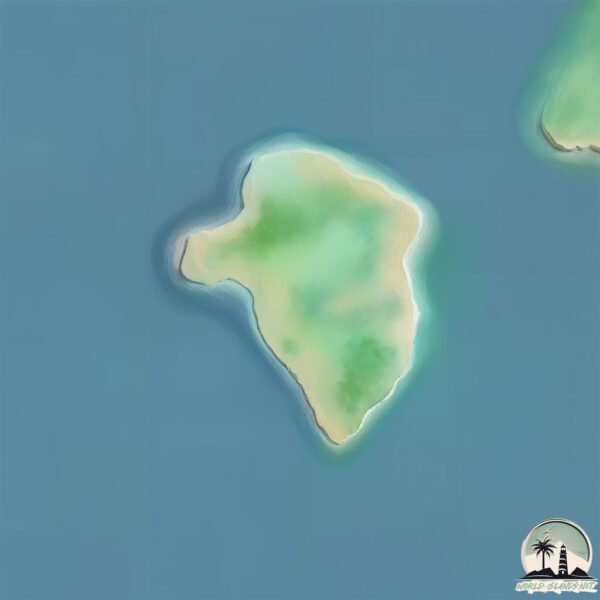Welcome to Harold Island , a Tropical island in the Coral Sea, part of the majestic Pacific Ocean. This guide offers a comprehensive overview of what makes Harold Island unique – from its geography and climate to its population, infrastructure, and beyond. Dive into the details:
Geography and size of Harold Island
Size: 0.33 km²Coastline: 2.5 kmOcean: Pacific OceanSea: Coral SeaContinent: Oceania
Harold Island is a Tiny Island spanning 0.33 km² with a coastline of 2.5 km.
Archipel: –
Tectonic Plate: Australia – A major tectonic plate covering Australia, New Zealand, and parts of the Indian and Pacific Oceans, known for its relative stability and occasional seismic activity.
The geographic heart of the island is pinpointed at these coordinates:
Climate and weather of Harold Island
Climate Zone: TropicalClimate Details: Tropical Savanna, WetTemperature: Hot
Climate Characteristics: Defined by distinct wet and dry seasons with high temperatures year-round. Pronounced rainfall occurs during the wet season, while the dry season is marked by drought.
Topography and nature of Harold Island
Timezone: UTC+10:00Timezone places: Australia/SydneyMax. Elevation: 7 m Mean Elevation: 3 mVegetation: Evergreen Broadleaf ForestTree Coverage: 66%
The mean elevation is 3 m. The highest elevation on the island reaches approximately 7 meters above sea level. The island is characterized by Plains: Flat, low-lying lands characterized by a maximum elevation of up to 200 meters. On islands, plains are typically coastal lowlands or central flat areas.
Dominating Vegetation: Evergreen Broadleaf Forest
Vegetation: 1 vegetation zones – Minimal Diversity Island
Infrastructure and Travelling to Harold Island
Does the island have a public airport? no .
Does the island have a major port? no .
The mean population of Harold Island is 1 per km². Harold Island is Gently Populated. The island belongs to Australia .
Continuing your journey, Whitsunday is the next notable island, situated merely km away.
Herald Island Path Loop Walk
Herald Island Path is an easy loop walk of 2.7 km, it'll take you around 40 mins allowing for time to take photos. Located in ...
Herald Island Path Loop Walk
Herald Island Path is an easy loop walk of 2.7 km, it'll take you ...
Herald Island Path is an easy loop walk of 2.7 km, it'll take you around 40 mins allowing for time to take photos. Located in ...
My Wrangel and Herald Islands
My Wrangel and Herald Islands in Art. by Vasyl Prydatko-Dolin.
My Wrangel and Herald Islands in Art. by Vasyl Prydatko-Dolin.
The Island Rover (Harold's Boat Problem) || Feature Documentary #freeport #maine #2024
Harold Arndt has spent more than 30 years building an educational ...
Harold Arndt has spent more than 30 years building an educational schooner out of recycled steel behind his home in Freeport, ...
Australia is classified as Developed region: nonG7: Developed economies outside of the Group of Seven, characterized by high income and advanced economic structures. The level of income is High income: OECD.
News – Latest Updates and Headlines from Harold Island
Stay informed with the most recent news and important headlines from Harold Island. Here’s a roundup of the latest developments.
Loading...
Please note: The data used here has been primarily extracted from satellite readings. Deviations from exact values may occur, particularly regarding the height of elevations and population density. Land area and coastline measurements refer to average values at mean high tide.

